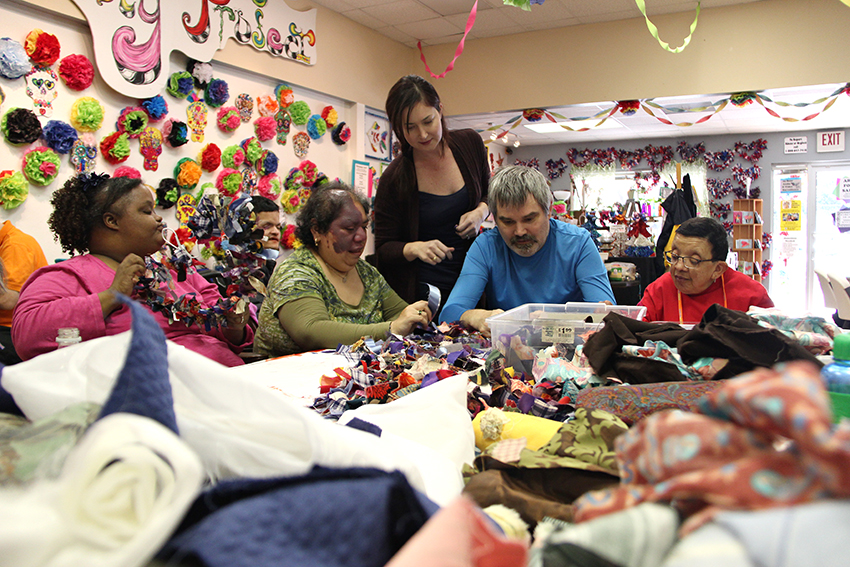From his group home in South Austin, Toby, diagnosed with cerebral palsy at birth, dreamed of singing in front of an audience. After joining the Austin Harmony Project, he left behind the CD player he loved and stepped out of his room to sing for crowds throughout Austin.
“I’ve always looked for a place like this, with music,” he said. “And if they need me to help somebody else with their art, they’ll ask me, and I’ll go directly to where they need me to go.”
Toby and several others perform at the Austin Harmony Project, a non-profit created to fight depression in people with mental or physical impairments through artistic expression. The program welcomes adults with developmental disabilities from Monday through Friday, where they produce works of art and music shows to open new doors of communication.
“Through their life, they’ve just been told ‘go here, go there, do this do that,’” Tressie Seegers, founder and executive director, said. “They don’t really have a lot of choices. When you start making a choice for yourself, it’s just another way to build up their wellbeing.”
The Austin Harmony Project includes people with Down syndrome, cerebral palsy, autism and intellectual disability (ID.) The organization strives to decrease maladaptive behaviors, or anger outbursts, that particularly affect non-verbal participants.
“It opens new doors of communication for them so they’re able to connect with people through their art, and that’s something they’re not used to,” Seegers said. “It helps to build a bridge from them to the community.”
After her mother passed away, Elizabeth, another participant diagnosed with ID, found a home at the Austin Harmony Project.
“I like doing hearts and Christmas stuff,” Elizabeth said. “My life changed since my mom left. She’s up there in heaven. Now I like to hang out with Toby and help my friends.”
Participants are required to pay $10 to $20 a day, keeping tuition low to avoid turning anyone down. Some opt to pay through a Medicaid waiver program called Home and Community Services.
In the art department, participants create collaborative pieces, working together to produce and sell their projects in The Harmony Art, Garden and Gift Shop located inside the studio. The profits go back into the program to cover arts and crafts supplies, instruments and other expenses.
The participants who enjoy music perform as the Sweet Harmony Band in live music shows once every three months in venues such as The Continental Club and C Boys Heart and Soul. The band also plays for nursing homes and other programs for people with disabilities. Toby is usually hired as a solo artist to sing the national anthem for private parties and works as the lead singer at public venues.
“I would love for the people of the community to just look at them in a different way,” Seeger said. “Instead of looking at what they can’t do, look at them in the way that they are very special and that they can contribute to society through their artwork and music.”
Seeger said the artists undergo a “flow” when they create art. The mind stays occupied while they get involved in their artwork, and the brain is stimulated to build self-esteem and make decisions on their own. The participants automatically gain a better sense of well-being and community.
“It makes me happy in many, many ways,” Toby said. “I can guarantee you I love it.”















